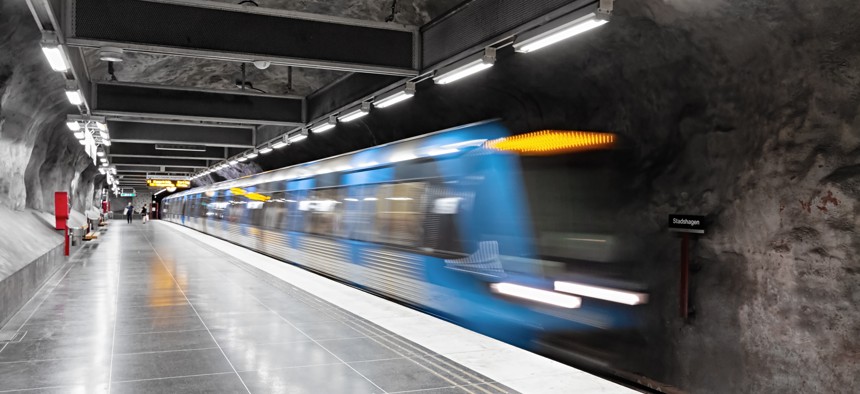We like to think we are best at digital, but maybe not

A train arrives at the Hjulsta metro station in Stockholm. rusm/Getty Images
COMMENTARY: Steve Kelman thinks the United States could learn a few things about technology-enhanced infrastructure from Europe and China.
I am visiting Europe for the first time since the pandemic, to go to an academic public administration conference in the Netherlands and (on the way there, since I was going to Europe anyway) to visit friends in Sweden. I have had two small but perhaps somewhat revealing experiences that have taught me something about the use, or rather non-use, of one form of digital technology — credit cards – in Europe vs. the U.S.
The first experience involved buying tickets for public transportation (buses in both places, subway in Stockholm). How do I buy such tickets in the U.S.? In Boston, I sometimes buy monthly commuter rail and subway pass, and in that case my job is simple, though low-tech: I order a pass online, it comes in the mail, and I show the pass to a train conductor or use it on a turnstile for the subway. However, if I don’t have a monthly pass, I need to tell the conductor I want to buy a pass on the commuter rail, take out my credit card (I could also pay cash), give it to the conductor, and have him or her print out off an app a paper ticket, which is then given to me. When I want to transfer from the commuter rail to the subway, I need to go to a machine and buy value on a subway card that some time ago I got by going into downtown Boston to an office that sold such cards.
How does the same operation occur in both Stockholm and the Netherlands? The answer is that I take my credit card, swipe it when I get onto a bus or at a subway stop, and go to my seat. The system pays the fare using my credit card. I do not get any sort of ticket.
How about paying for a meal in a restaurant? We are given no bill as we would be in the U.S. We don’t give the waiter the credit card and have them print something out for us to look at and sign. In Europe, people place their credit card against a screen the size of a smartphone, and the system takes it from there.
Let’s just say the system in Stockholm and Holland uses tech and is also much simpler for me as a customer.
We in the U.S. like to think we are best in the world in digital. And maybe in some areas we are, but for consumer-facing IT not so much. I first learned this in China when I discovered their WeChat app. It was a site to send private messages and have private online chats with friends, but can and very largely is used to order all sorts of products (which we might order through Amazon) as well as services, including a Chinese counterpart to GrubHub.
We should try to see how to catch up with others who are way ahead of us digitally.





